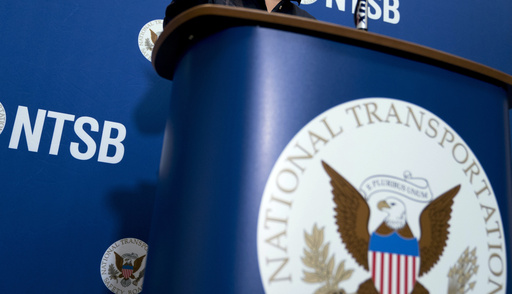An air traffic’s controller’s faulty assumption that a Southwest Airlines jetliner would take off from a Texas airport before a landing FedEx plane reached the runway caused the planes to come within less than 200 feet of colliding in thick fog last year, federal investigators said Thursday.
The National Transportation Safety Board said the Southwest pilots contributed to the close call in Austin on Feb. 4, 2023, by not telling the controller they needed time on the runway before beginning their takeoff roll.
The air traffic controller had cleared both planes to use the same runway. A potential disaster was avoided at the last moment, when the FedEx pilots glimpsed the silhouette of the Southwest jet —carrying 128 passengers and crew members— and climbed out of harm’s way.
“This incident could have been catastrophic if not for the heroic actions of the FedEx crew,” NTSB Chair Jennifer Homendy said during the hearing.
Board member Michael Graham called the incident a failure of aviation safety.
“We had two aircraft within 200 feet of each other, and that should not happen,” Graham said. He noted the lack of airport ground radar or technology to warn pilots of the potential for collision, and said the air traffic controller and Southwest crew showed poor judgment and decision-making.
“If it was not for FedEx crew’s last minute go-around, we might be having a different discussion today,” Graham said.
In a statement of probable cause that it adopted unanimously, the five-member board also faulted the Federal Aviation Administration for not requiring the Austin airport to have technology that would have helped air traffic controller Damian Campbell track the planes. He told investigators he could not see the Southwest jet as it taxied to the runway.
The board also said a lack of recent training by Austin controllers on operating in poor visibility contributed to the close call.
The FedEx plane was making its final approach to land at Austin-Bergstrom International Airport when it nearly hit the top of the Southwest Boeing 737, which was roaring down the runway for takeoff in thick fog.
Campbell told investigators that he had expected the Southwest jet to take off more quickly. In hindsight, the controller said, he could have made the Southwest crew wait until the FedEx Boeing 767 landed.
NTSB investigators said controllers in Austin had not recently trained for nor worked in low-visibility conditions. “As a result,” investigator Brian Soper said, Campbell “was not adequately prepared to handling the traffic” that morning.
Investigators pointed out that the Austin airport lacked radar-based ground-tracking technology — in use at 43 other U.S. airports — that would have helped the controller track the planes. The FAA has announced plans to make GPS-based tracking technology available to more airports, including Austin.
Investigators also noted that the Southwest pilots were still 550 feet short of the runway when they said they were ready to take off. When they reached the runway, they held longer to run up the engines. The pilots should have told the controller they needed more time, said investigator Warren Abrams, a former airline captain.
FedEx co-pilot Robert Bradeen Jr. was in the audience Thursday and received an ovation. FedEx captain Hugo Carvajal III, who was not at the hearing, previously told investigators he was irritated and perplexed when he heard the controller clearing the Southwest jet to take off from the same runway that he was approaching.
The incident was among several close calls last year that prompted the FAA to call a “safety summit” of aviation industry participants.
FAA officials have maintained that U.S. aviation has never been safer. However, a panel of independent experts concluded last year that the safety margin is shrinking and the FAA needs better staffing and technology to manage the nation’s airspace.
“Alarming as they are, events like (the one in Austin) are rare. Commercial aviation is by far our safest mode of transportation,” Homendy said. “But the somber truth is that it only takes one” mistake that “can lead to tragedy, shatter our stellar safety record, and destroy public confidence in our aviation system.”
According to FAA figures, last year there were 23 of the most serious “runway incursions” — close calls involving one or more planes on the ground — compared to 16 in 2022.
“We are trending in the wrong direction,” said Homendy, a frequent critic of the FAA.
The FAA countered that the rate of serious runway incidents has dropped 59% so far in 2024 compared with 2023. The agency said it has improved tracking technology at several airports, including Austin, where the tower now has a tool called “approach runway verification” and modernized simulators for training.
The FAA said it would review the NTSB’s recommendations.
“Our top priority is the safety of the flying public,” the agency said, “and the FAA and the aviation community continue to pursue the goal of zero serious close calls.”
This website uses cookies so that we can provide you with the best user experience possible. Cookie information is stored in your browser and performs functions such as recognising you when you return to our website and helping our team to understand which sections of the website you find most interesting and useful.
